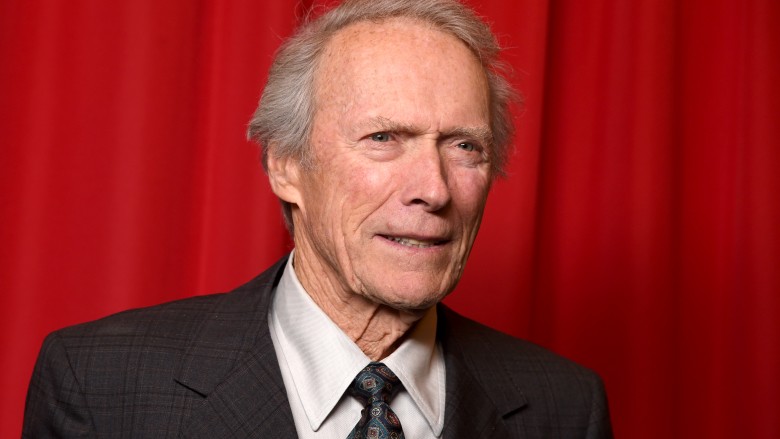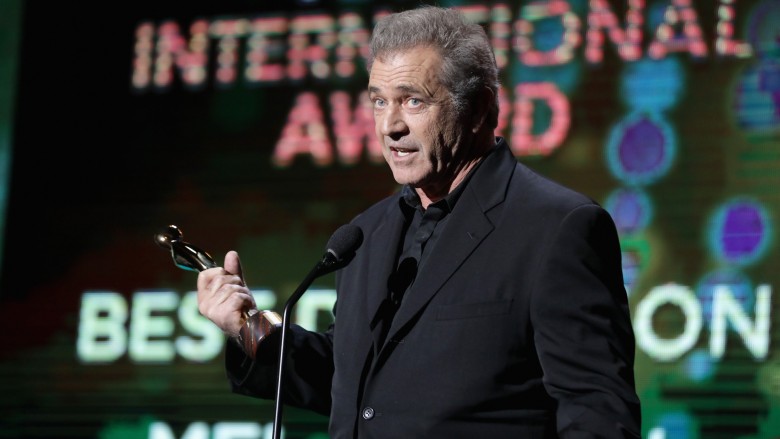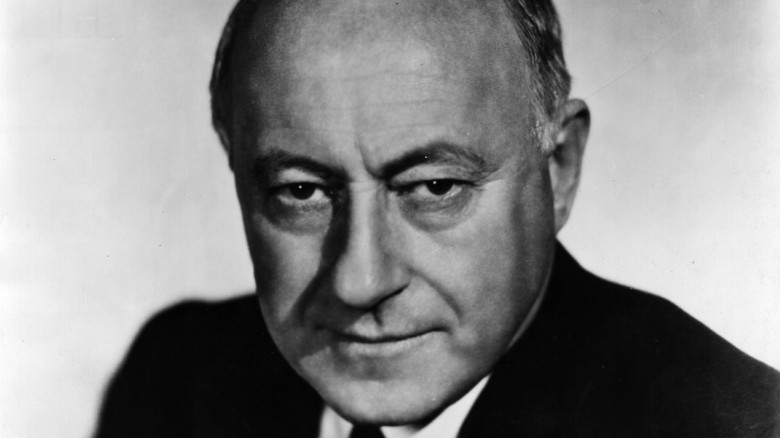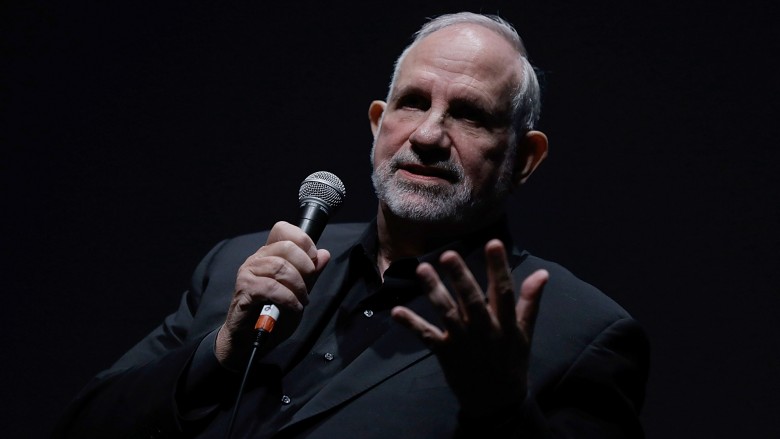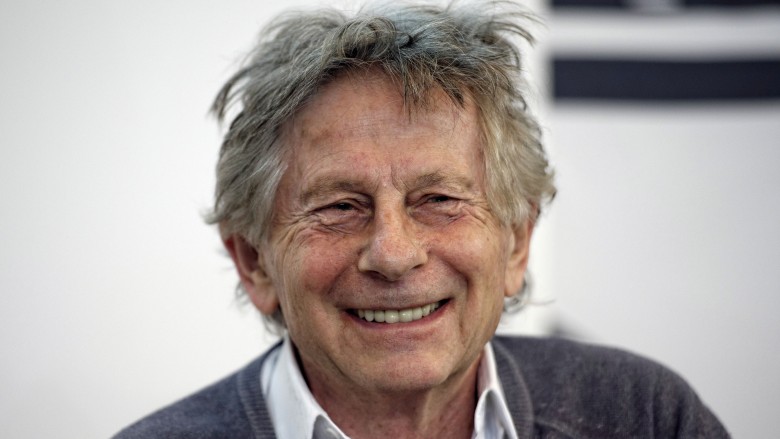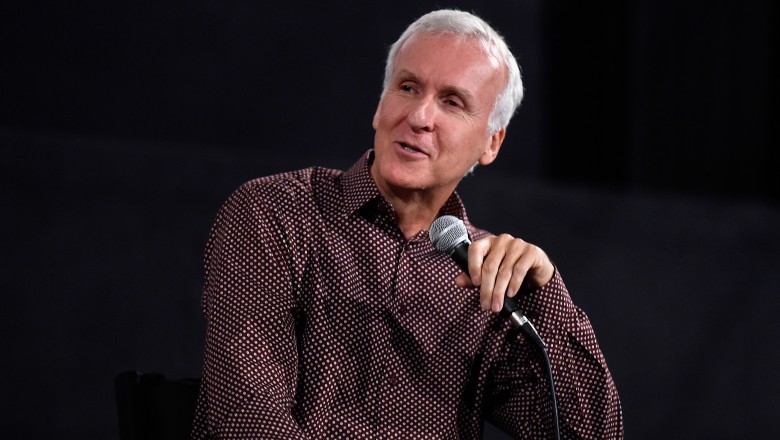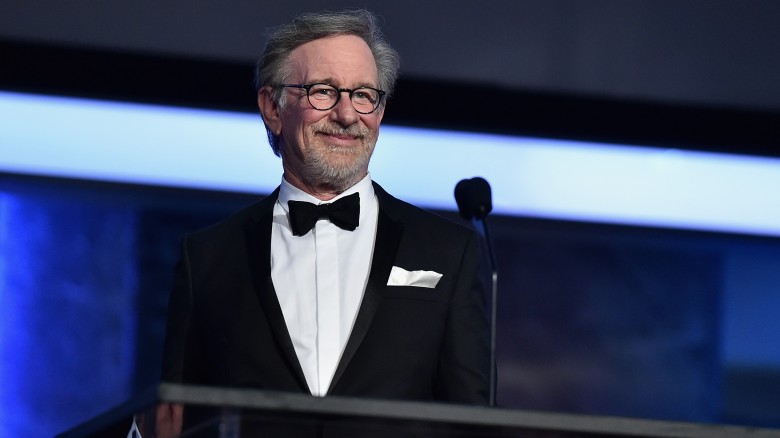Famous Directors Who Escaped Death
It's hard to imagine a world without our favorite movies, but if life had been just a little bit crueler, many classic films would've never made it to theaters. Why? Because the geniuses directing them would've been pushing up daisies way before their time. Luckily for us (and them), these filmmakers managed to escape the Grim Reaper ... at least for a little while.
Clint Eastwood survived an airplane crash
Perhaps the most successful actor-turned-director ever, Clint Eastwood has created some genuine classics (think Unforgiven and Million Dollar Baby), as well as some genuine clunkers (anyone remember Blood Work?). Fortunately, most folks approve of his 2016 biopic, Sully, about the pilot who saved 155 people by landing a damaged plane in the Hudson River. Critics described the movie as "gripping," "intense," and "breathtaking." Maybe the movie is so all-those-things because Eastwood has firsthand experience when it comes to plane wrecks.
When the Korean War broke out, Eastwood was drafted by the Army but, instead of going overseas, he was given the super-dangerous job of swimming instructor at Fort Ord in California. Eventually, Eastwood was given leave to visit his home in Seattle, but on his flight back to Washington, things took a terrifying turn. The 21-year-old was the only passenger aboard a World War II torpedo bomber when the engines suddenly started sputtering. The pilot informed Eastwood they were going down, and according to the director, he remembers thinking, "Well, 21 is not as long as a person wants to live." If you're gonna die, die with your droll on.
Thankfully, the pilot safely landed the plane in the waters near San Francisco ... but Eastwood wasn't out of trouble yet. The sky was dark and stormy, and this particular patch of sea was crawling with sharks. Luckily, Eastwood could see the shore, and managed to swim over a mile before reaching a radio relay tower. But did the incident impact the making of Sully? Well, in an interview with The Hollywood Reporter, Eastwood says he would've made the movie whether or not he'd ever crashed, though he did admit, "I'm probably the only director who's actually been in a water landing." Write what you know, direct what you know.
Mel Gibson was nearly crushed to death
Working on a Mel Gibson movie can be a pretty dangerous gig. Actors on the set of his 2006 epic, Apocalypto, suffered everything from "pulled muscles" to "ripped ligaments." Things got way crazier on the set of Passion of the Christ, when Jim Caviezel was struck by lightning. As if that wasn't nutty enough, the film's assistant director, Jan Michelini, was also hit by a lightning bolt ... twice. Pretty sure somebody was sending a warning.
By comparison, the Oscar-winning Braveheart was pretty darn tame. According to Gibson, things didn't get worse than "a fractured ankle, a broken nose, and three hangnails," which is pretty shocking, considering all those broadswords and battle axes swinging around. However, if things had played out differently, the movie would've suffered a major casualty—the director himself.
In addition to working behind the camera, Gibson was also playing the lead character, William Wallace. As a result, he was smack-dab in the middle of some brutal battle sequences. During one scene, Gibson was riding a horse that was trained to rear up on its back legs. Unfortunately, the director accidentally tumbled off his steed, and probably let out a gasp of terror as the horse tumbled backwards as well. Gibson was seconds away from getting squashed, when his stunt double rushed in to save the day, dragging the director to safety and sparing him from becoming a roadkill warrior.
Buster Keaton nearly died on set
Before Jackie Chan wowed audiences with death-defying stunts, there was Buster Keaton. Perhaps the greatest actor-director of the Silent Era, Keaton loaded his films with jaw-dropping gags, like narrowly avoiding being crushed by a two-ton wall. Of course, when you keep shaking your fist at fate, sooner or later fate is going to strike back.
For example, while filming The General, Keaton was knocked unconscious by a cannon blast. But that's nothing compared to what happened on Sherlock Jr. During one scene, Keaton was running on top of a moving train when he grabbed a rope connected to a water tower. As the train pulled out from under his feet, Keaton was left dangling in the air. As planned, the rope opened a spout which doused him in water, but Keaton wasn't planning on such a powerful blast. The water knocked him onto the railroad track, slamming his head against a rail. While Keaton survived the accident, he realized years later that the blow had actually fractured his neck.
But Keaton's closest encounter with death came while shooting Our Hospitality. In one key scene, Keaton's character must save his girlfriend from plunging down a waterfall. To capture this moment, Keaton actually constructed a fake waterfall, and replaced the actress with a dummy. Keaton then tied himself to a secured chunk of wood, which allowed him to swing back and forth beneath the waterfall until he could grab the dummy. The stunt looked great on-screen, but Keaton swallowed so much water, he nearly drowned. Things were so intense, a doctor was even called to perform first aid.
Of course, the Great Stone Face wasn't going to let a little water keep him down, and he kept on performing stunts well into the 1960s, inspiring the likes of — you guessed it — Jackie Chan. In fact, when asked about his influences, the Chinese superstar responded, "I think [Keaton] is the best."
Cecil B. DeMille versus Thomas Edison
In the early days of cinema, making movies could seriously get you killed. The entire industry was under the thumb of a powerful group called the Motion Picture Patents Company, aka the Edison Trust. Yeah, that Edison. Sure, he gave us the lightbulb, but the Wizard of Menlo Park was really more of a mobster. In 1891, Edison filed a patent on his movie camera, and then bought up competing patents. Next, he encouraged major film studios to form the Edison Trust, a monopoly that ran the movie business like a dictatorship.
While the Trust was dissolved in 1918, it was insanely powerful in its day. Under the cartel, filmmakers could only use equipment owned by the trust. As the studios controlled distribution, they forced movie theaters to pay $2 a week to show films which, of course, were purchased from the Trust. Foreign films were outlawed, and all movies had to run 20 minutes or less. Oh, and if you tried making a movie outside the Trust, or stopped paying royalties on Trust-patented equipment, things got nasty real fast.
One director who quickly found himself on Edison's bad side was Cecil B. DeMille, the guy behind Biblical epics like The Ten Commandments. Like many directors, DeMille had fled to California to escape the long arm of the Trust (thus laying the foundation for Hollywood), but Edison's gangsters weren't far behind. According to Matt Novak of Gizmodo, DeMille was shot at twice and received multiple death threats. As a result, the director began sleeping with a shotgun, guarding his movies from cinematic hitmen. Overall, he collected nearly 90 guns and wore a pistol wherever he went. The man even kept a pet wolf for protection. These crazy tactics seemed to work, and soon, Edison's gangsters weren't quite so ready to get close up to Mr. DeMille.
Brian De Palma was shot by the cops
During the '70s and '80s, Brian De Palma was one of the edgiest filmmakers in Tinseltown. Known for his Hitchcockian voyeurism, De Palma cemented his legacy with films like Carrie, Blow Out, and Dressed to Kill. The man's also pretty skilled when it comes to extreme violence. Think about the baseball bat scene in The Untouchables, the elevator death in Mission: Impossible, and the final shootout in Scarface. Maybe De Palma is able to create such powerful moments, especially scenes involving firearms, because he knows what it feels like to get shot.
In 1963, De Palma was a 22-year-old living in New York, but even though it was about the time he'd graduated from college, he was "feeling very sad" about himself. In an interview with The New York Times, De Palma revealed that one night, while feeling depressed, he had a little too much to drink and stole himself a motorcycle. Eventually, he was pulled over by the police, but instead of complying with the cops, he actually "knocked one down." Wrong move — it seems he tried to flee the scene because, as the director put it, the officers "ran me down and shot me."
De Palma took a bullet to the leg, and after he was treated at a nearby hospital, he spent a bit of time behind bars. When his case finally went to court, he was given a suspended sentence after pleading guilty. The incident must've informed De Palma's understanding of violence — every time Al Pacino gets shot in one of his films, the director probably winces a bit behind the camera.
John Ford survived the Battle of Midway
When America entered World War II, John Ford was already a successful director, with credits like Stagecoach and The Grapes of Wrath. But after Pearl Harbor, the 47-year-old wasn't going to sit on the sidelines. Instead, he was placed in charge of the Field Photographic Unit, a group tasked with creating training films and documenting the war effort. During his time in service, Ford recorded everything from preparations in Panama to the Doolittle Raid, but his greatest moment came in 1942, during the Battle of Midway.
Days before the Japanese attacked, Ford was sent to Midway on a "secret mission." He figured he was supposed to document life around Midway's naval base, but hours before the battle, Ford was briefed on the real situation. The director was ordered to climb up on the roof of a power station and keep everyone informed on the battle over the telephone. Well! That's not dangerous at all!
Ford climbed up as ordered but also set up his camera — when the Japanese arrived, he began rolling. But as Ford was capturing the battle, a bomb landed on the corner of the power station and sent him sprawling. When the director regained consciousness, he discovered he'd taken shrapnel in his arm but, after getting the wound treated, he immediately went back to filming.
The resulting 18-minute film won an Oscar for Best Documentary, but that wasn't the only award Ford earned. The man also won the Legion of Merit, the Air Medal, the Purple Heart, and eventually, the Presidential Medal of Freedom. Couple that with his four Oscars, and it's easy to see why critics consider Ford one of the all-time greats.
William Friedkin's demonic encounter
William Friedkin has directed all sorts of different movies, from police procedurals to psychological thrillers. Still, no matter how many movies this guy makes, people will always remember him as the man behind the scariest movie ever made, The Exorcist. But, according to Friedkin, his 1973 classic isn't a horror movie. Instead, it's more of a public service announcement.
Confused? See, as an agnostic, Friedkin believes "the power of God is unknowable," but that God definitely exists. On the flip side, that means demons are also real so, according to Friedkin, he adapted William Peter Blatty's novel "believing in the reality of exorcism." But while he accepted the existence of Satan, Friedkin had never seen a real-life exorcism ... not until recently, anyway.
In 2016, the director wrote a piece for Vanity Fair, detailing a trip to Rome where he met with Father Amorth, the Vatican's chief exorcist (yes, that's a thing). With the priest's permission, Friedkin was allowed to film the "actual" exorcism of a woman named Rosa. As you might expect, there was a lot of Latin, screaming, and foaming at the mouth. Five dudes were even brought in to hold the woman down. Believe it or not, this was Rosa's ninth exorcism (some people have all the luck, others are Rosa), and Friedkin captured the whole event on camera.
But not everyone was happy with Friedkin's documentary. Rosa's loved ones worried "Satan's followers" might use the film for evil — after the exorcism, her boyfriend demanded the director hand over the footage. When Friedkin said no, the boyfriend threatened to kill the director and his entire family. He even promised that if he didn't murder Friedkin, Satan would. Adding to the insanity, Rosa was suffering another demonic episode nearby (the big 1-0!). As the boyfriend threatened the director, Rosa was screaming in a voice Friedkin described as the "voice of the damned."
Fortunately, Friedkin escaped with his footage, although it sounds like he had a devil of a time doing it.
Roman Polanski survived the Holocaust
In 1969, the Manson Family murdered Roman Polanski's wife, actress Sharon Tate. But Charles Manson wasn't the only evil icon who showed up in Polanski's life. Long before he directed movies like Rosemary's Baby and Chinatown, Roman Polanski found his world turned upside down by Adolf Hitler.
When the director was a young boy, his family lived in the Polish capital of Krakow — after the Third Reich rolled into town, the Jewish citizens were forced to live inside a walled-up ghetto, separated from the rest of the city. As you might imagine, life inside the Krakow ghetto was a living nightmare. On one occasion, Polanski witnessed an SS officer execute an old woman at point-blank range. He also saw Nazi troops force children aboard trains. According to The Hollywood Reporter, the director vividly remembers watching the parents "swaying and waving and moaning and screaming and crying and falling on the ground..."
Even worse, when Polanski was just nine, his mother was shipped off to Auschwitz where she was executed, and his father was deported to an Austrian prison camp. Polanski could very well have suffered a similar fate, but the young boy managed to escape the ghetto by crawling under a swath of barbed wire. Once outside, Polanski stayed with friends and changed his name. "I survived," the director said, "because I did not look very much like a Jew."
When the war ended, the director reunited with his father, but the experience no doubt scarred him for life. So if you ever work up the courage to re-watch The Pianist, remember this isn't just a movie for the man behind the camera.
James Cameron nearly drowned
James Cameron is king of the world, king of the box office, and king of the ocean. Seriously, this guy has spent more time underwater than most fish. He's visited the Titanic on multiple occasions, and in 2012, became the first human to take a solo submarine dive into Challenger Deep, the deepest point of any ocean. Of course, all this underwater activity is pretty dangerous, and one time, it was almost game over, man, game over.
The accident occurred while Cameron was filming The Abyss, a sci-fi story that takes place, yep, underwater. Only, instead of the ocean, the film crew worked inside a pool that held 7.5 million gallons of water. In order to get the shots he needed, Cameron weighed himself down with 40 extra pounds. He also removed his flippers and, for some bizarre reason, didn't ask a safety diver to stay nearby. Instead, he asked his assistant director to remind him every so often to refill his oxygen tank.
You can see where this is going.
The AD forgot to remind Cameron, and the director was so busy, he didn't notice his oxygen tank was empty until it was too late. Panicking, he signaled for help, but to no avail. He then ditched as much weight as possible and began frantically swimming for the surface. As he neared the top, a safety diver finally noticed and grabbed Cameron, preventing him from surfacing too quickly. The diver offered Cameron his backup regulator, but when the director tried to get a breath, he discovered the device was broken.
Cameron needed to breathe, but the diver wouldn't let go. Desperate, the director reared back and socked the guy in the face. According to the L.A. Times, when Cameron got his breath back, he was understandably not a happy man, and it was "hasta la vista, baby" for both the diver and his forgetful AD.
Steven Spielberg could have been raped
Everybody loves Steven Spielberg ... but some love him a little too much. Take Jonathan Norman, for example. An unhinged bodybuilder who'd once assaulted a group of people with his car, Norman was all brawn and scrambled-egg brains. That was bad news for Spielberg, as Norman was sexually obsessed with the director. In fact, Norman was an incredibly deranged stalker, who'd purchased a map pinpointing the homes of celebrities. That's how he found Spielberg's California home — for a month, he watched the director's mansion, all the while plotting to rape the filmmaker.
In addition to spying on the house, Norman bought a car that looked similar to the one owned by Kate Capshaw, Spielberg's wife. He thought it would allow him to approach the house without the security guards getting suspicious. Of course, when he was discovered in Spielberg's backyard, that kind of blew his cover. Norman was quickly apprehended, and authorities discovered the bodybuilder had assembled a terrifying "rape kit." The cops found a box cutter, razor blades, three sets of handcuffs, and duct tape. They discovered photos of Spielberg and his family in Norman's car, plus a list of items Norman planned on buying, like dog collars and chloroform.
Fortunately, Spielberg had been in Ireland at the time, working on Saving Private Ryan. But when Norman went to trial, the director took the stand, saying he legitimately feared for his life. "I think [Norman is] on a mission ..." Spielberg testified, "and I think I am the subject of the mission." The judge agreed, and Norman was sentenced to 25 years to life. With the stalker behind bars, Spielberg was able to breathe a sigh of relief, knowing he'd narrowly missed a close encounter of the worst kind.

